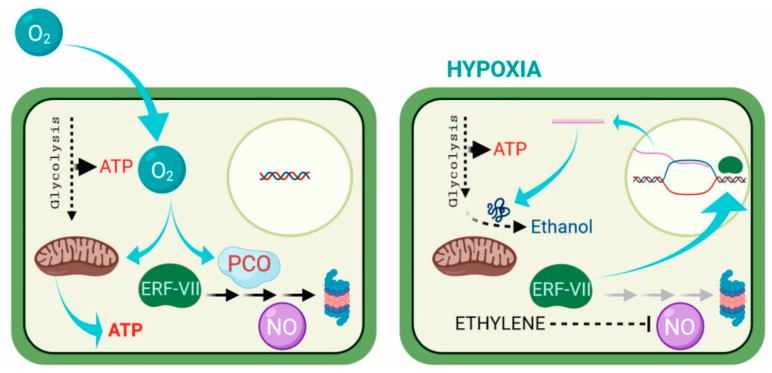Figure 1.
How plants sense oxygen. Under aerobic conditions (left), aerobic respiration in the mitochondria provides most of the energy (ATP) required for the cell metabolism. The ERF-VII transcription factor genes are constitutively expressed, but their stability is compromised by the activity of PCOs, which, in a process requiring oxygen, oxidize the N-terminal Cys residue, channeling the ERF-VII proteins to the proteasome, in a process also requiring nitric oxide (NO). Under hypoxia (right), the respiration in the mitochondria is drastically reduced, and ATP production can only occur because of enhanced glycolytic activity. The ERF-VII proteins are stabilized because of the absence of oxygen and also thanks to ethylene production, which dampens the presence of NO in the cell. The stable ERF-VII proteins migrate to the nucleus where they activate the transcription of Hypoxia-Responsive Genes (HRGs), including genes encoding proteins required for alcoholic fermentation. This figure was created using BioRender [17].

